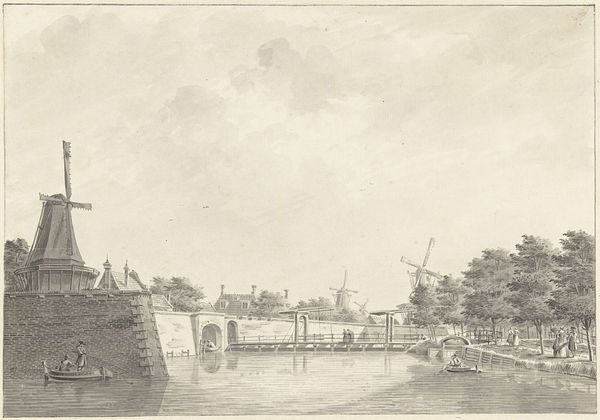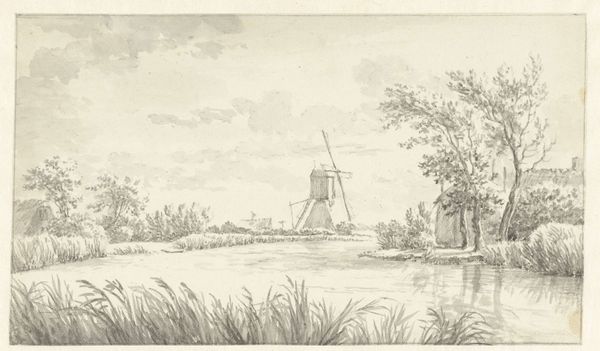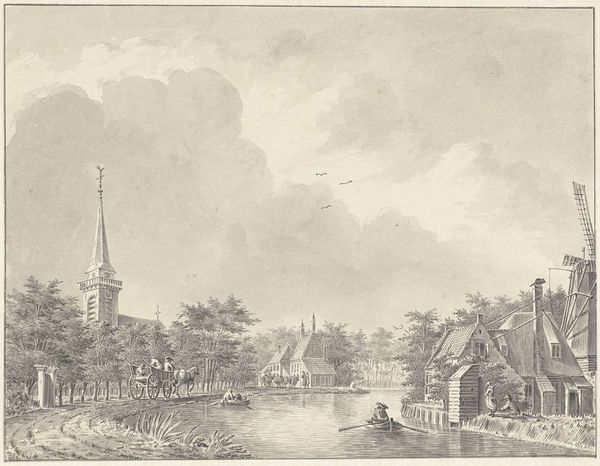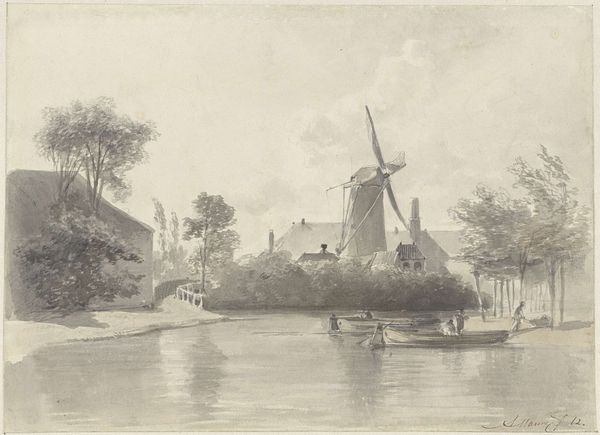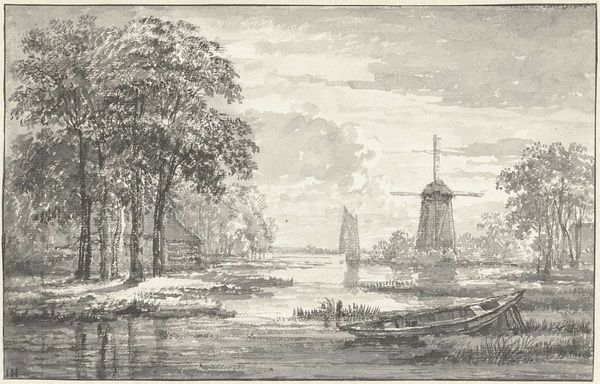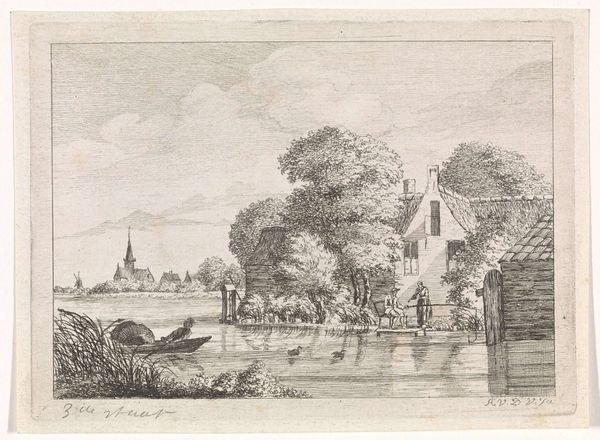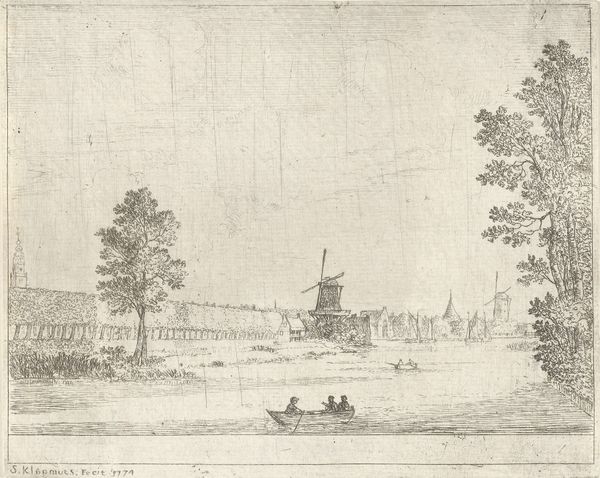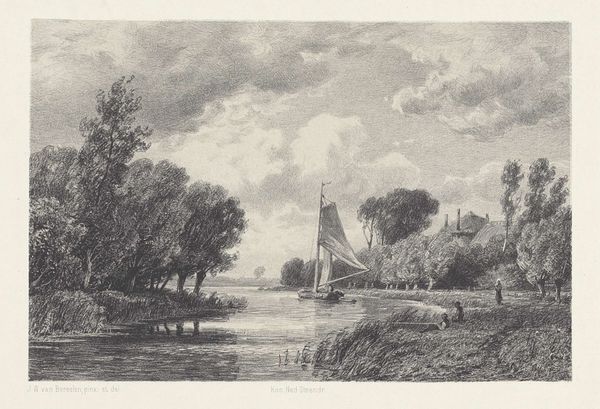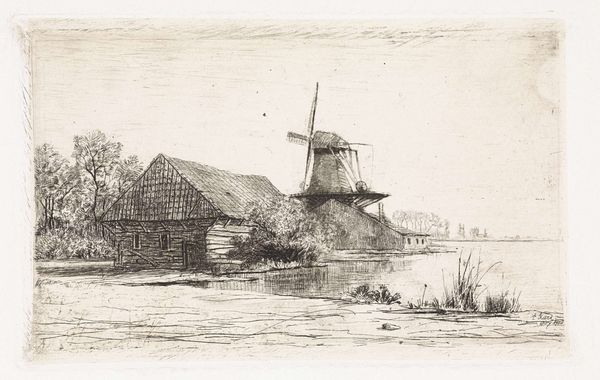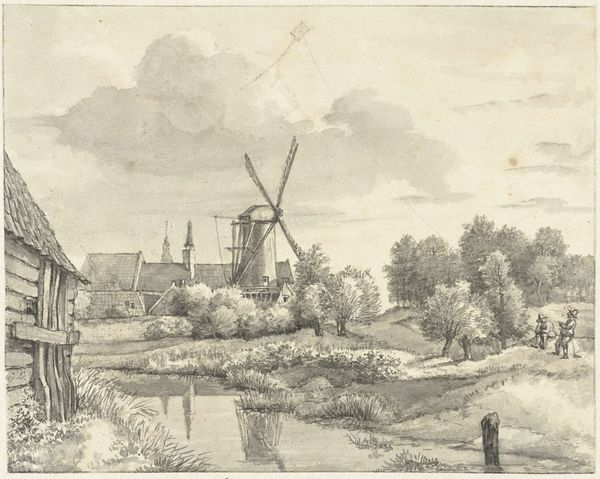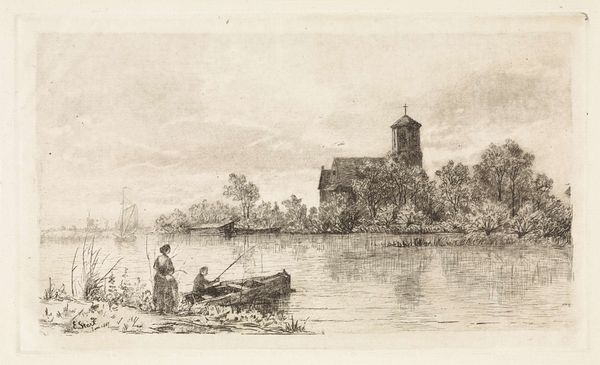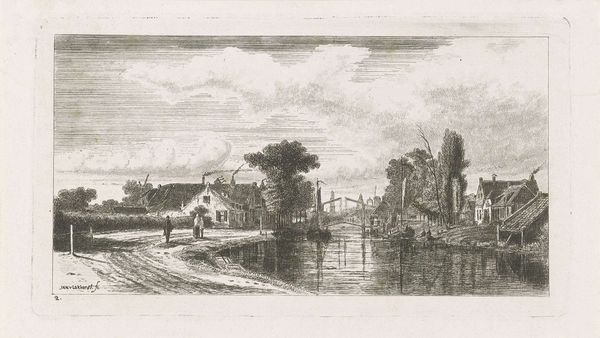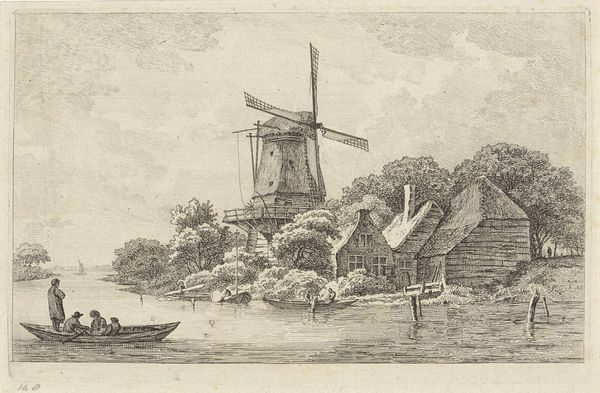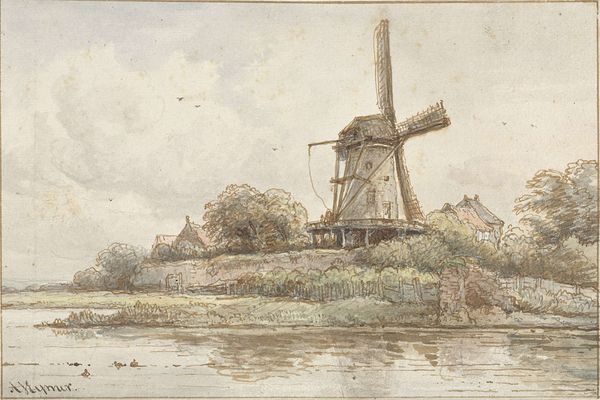
drawing, pencil
#
drawing
#
dutch-golden-age
#
pencil sketch
#
landscape
#
pencil
#
cityscape
#
pencil work
Dimensions: height 145 mm, width 204 mm
Copyright: Rijks Museum: Open Domain
Jan de Beijer made this drawing of Doetinchem with pen and grey ink sometime in the 18th century. Drawings like this played an important role in Dutch society. In this period, the Netherlands was a confederation of independent provinces, each with its own distinct identity and history. De Beijer and other artists were commissioned to create topographical views of Dutch cities and landscapes for wealthy patrons and civic institutions. These images served to document and celebrate local identity, and also to promote regional pride and investment. The topographical artist occupied a unique position, being both an objective recorder and a promoter of local values. The Rijksmuseum has numerous examples of these works in its collection, testifying to their value as historical documents and cultural artifacts. To better understand images like this, researchers can consult period maps, municipal records, and travel accounts. The study of art is always contingent on its institutional context and historical moment.
Comments
No comments
Be the first to comment and join the conversation on the ultimate creative platform.
